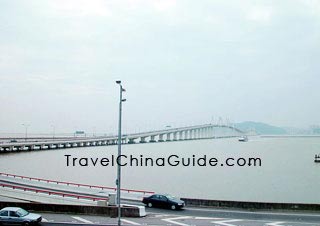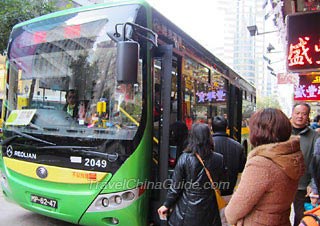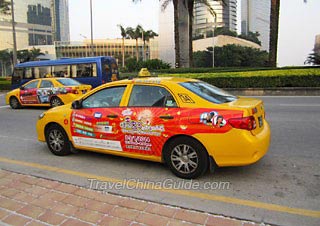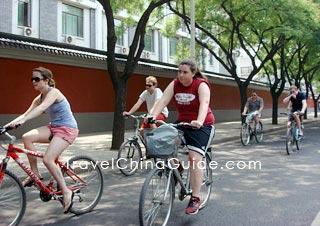Getting Around
 |
| Macau-Taipa Bridge |
Visitors to Macau are frequently surprised by the orderly way that traffic moves in this small city. On average some 130,000 vehicles each day take to the narrow and winding roads in an area of under 30 square kilometers, so a well ordered traffic plan has proved vital. Some 80% of the roads are one-way and this ensures that outside the morning and evening peak periods there is little congestion. A plentiful supply of taxis at the airport and ferry terminals together with an excellent public bus service helps with the movement of people at all times. An important feature of which the visitor should be aware is that the traffic in Macau moves on the left hand side of the road!
Macau Peninsular
Public Buses
TRANSMAC and TCM are the two bus companies operating all public and mini buses in the city.
 |
| Public Bus |
Bus lines cover almost all the attractions and hotels on the Peninsular and the main scenic spots on the outlying islands of Taipa and Coloane. The routes operate on a one-way circuit around the city. This means you would not necessarily have the same stops on a return trip. Ask the drivers for details. Most public buses are air-conditioned middle-sized vehicles capable of carrying more than 20 people. There are no conductors so it is necessary for you to have the appropriate change in coins before getting aboard. For the ride within the Peninsular, the fare is 2.5 MOP$. Several bus lines going further to the islands of Taipa and Coloane charge three to five Macanese dollars. The ride to Macau International Airport on the island of Taipa from the Peninsular is six MOP$. The operating hours of most buses are from 6:00 to 24:00.
Bus Nos. 21, 21A, 25, 26 and 26A run between the Peninsular and islands of Taipa and Coloane
Bus Nos. 11, 22, 28A, 33 and 34 run between the Macau Peninsular and island of Taipa.
API is a special line plying between the airport on the island of Taipa and the Peninsular
Tip: We suggest visitors try to avoid the peak morning and evening traffic periods when people crowd onto buses to go to work or return home. All bus stop signs have route descriptions in both Chinese and Portuguese. English versions of the local map can be obtained from the counters of local Tourist Bureau on Senado Square in the downtown area of the city.
Taxi
 There are around 1,100 taxis in the city which provide convenient service for local citizens and visitors along with city buses and free shuttle buses of casinos and hotels. Sometimes, it may be a little hard to hail a taxi, especially at the airport or Border Gate. Taxis here are mainly in white and yellow: the former can hold 4, 5 or 6 passengers, and the latter can accommodate at most 4 passengers.
There are around 1,100 taxis in the city which provide convenient service for local citizens and visitors along with city buses and free shuttle buses of casinos and hotels. Sometimes, it may be a little hard to hail a taxi, especially at the airport or Border Gate. Taxis here are mainly in white and yellow: the former can hold 4, 5 or 6 passengers, and the latter can accommodate at most 4 passengers.
Local maps with information in Chinese, Portuguese and English are supplied to taxi drivers by the local Tourism Administration Bureau so that they can communicate with tourists about the places and routes in the city. This can be a good way for tourists to generally know the city from the special “tour guide”.
Taxi Reservation Hotline: 853 28519519 & 853 28939939![]() Charging Standard:
Charging Standard:
| Category | Fare |
| First 1,600m (1.750yd) | 17MOP$ |
| Every Extra 260m (285yd) | 2MOP$ |
| Waiting Fee | 2MOP$/minute |
| Luggage Left at Compartment | 3MOP$/piece |
| Surcharge | |
|---|---|
| Taipa – Coloane Island | 2MOP$ |
| Macao Peninsular – Coloane Island | 5MOP$ |
| Boarding at Macao International Airport | 5MOP$ |
Sightseeing Vehicle
 |
| Bicycle Ride Around the city |
This is a small city that enables visitors to enjoy their visit by means of special tourist vehicles that include pedicabs and a replica of an old-style 1920s English bus.
Outlying Islands
Taxis inside the island areas charge the same as those on the Macau Peninsular. No extra fee is charged for the transit from the islands to the Peninsular.
Hotels on the island of Taipa have special buses leaving for the Macau Ferry Terminal.
In the Municipal Garden in the Taipa Village, there are some bicycle rental shops that provide for cycling visitors.